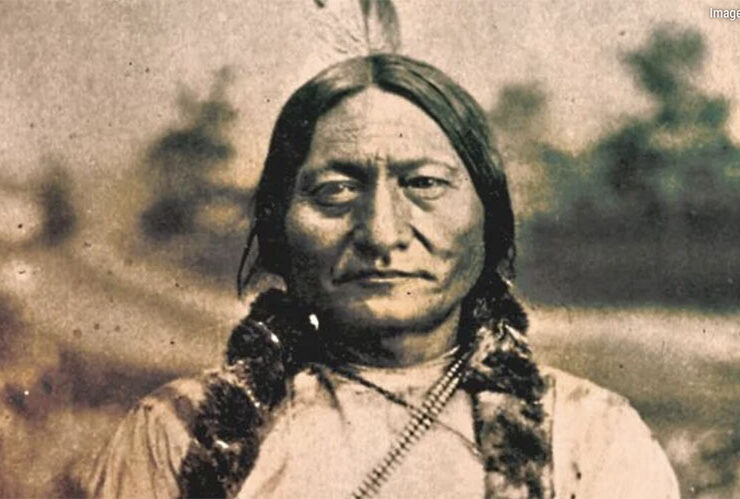What’s the Big Deal About Video Interviews?
By Marija Lazic … Video interviews have become the norm in the hiring process. They’ve replaced the traditional and outdated phone screen, but with a few tweaks. You’ll be given questions about why you want to work for the company, why you’re the best candidate, and a few questions to learn more about your character and work ethic.
Therefore, as people begin their search for a new job, we have collected the latest interview statistics to help people get through their interviews with flying colors.
So instead of sweating it out and trying to figure out the right way to act, dress, or speak during an interview, go ahead and take a look at these job interview statistics that are bound to make the interview process a little easier.
Top Facts and Stats on Interview Statistics in the US
- 76% of resume rejections are due to unprofessional email addresses.
- 80% of the job offers are not posted online.
- Job interviews last between 45 minutes and 1 hour.
- 85% of people lie on their resumes.
- You only have 7 seconds to make a good first impression
- Millennials and Gen Zs will make 75% of the global workforce by 2025.
- The current unemployment rate in the US is 10.2%.
Interesting Interview Statistics
1. 118 people apply for a single job, on average.
Whenever you apply for a job, it’s only natural to have some competition. The average number of people who tend to apply for a single job is 118, while only 20% of them get to be interviewed. So, next time you’re wondering how many applicants get interviews, know that it’s only 1 in 7.
2. Job interviews last between 45 minutes and 1 hour.
If an interview lasts 15 minutes or less, it’s probably a lousy one. If it’s 30 minutes long, it’s just not long enough. That said, 45 minutes to 1 hour is the golden number — and that’s not just one of the random interview facts. The more time you spend with the interviewer, the better the chances of getting to know them, and the other way around.
3. 91% of employers prefer their candidate to have work experience.
Nearly 91% of employers have stated that they preferred if their candidate had some work experience. However, 65% indicated that they prefer their candidates had some relevant work experience. Another 25% prefer work experience of any type, and a mere 5% said that work experience isn’t a significant factor when hiring.
4. 76% of resume rejections are due to unprofessional email addresses.
Unprofessional and inappropriate email addresses are the most common reason for job rejections. Then again, just as you email should be professional, so should your CV. If you don’t get rejected for your unprofessional email, you might get rejected for your unprofessional CV. Actually, a whopping 43% of CVs are discarded for not being well-written.
5. 47% of the candidates failed the job interview because they didn’t have enough information about the company they applied to.
Job interview statistics show that nearly 50% of the applicants failed the interview because of the lack of knowledge they had about the company and the job they wanted. It’s highly recommended doing some research about the company and the job you’re applying for.
6. You will need between 2 and 3 interviews with one employer before getting a job.
The average number of interviews before getting a job is between 2 and 3. With that being said, an employer would interview around 6 to 10 people, and if they don’t manage to find the right fit after 2 to 3 interviews, they’ll just find new candidates. So, the actual average number of interviews per job is a lot higher for recruiters — there is a huge amount of time and effort involved in finding the right person for the job.
7. 80% of the job offers are not posted online.
Although this number might seem high, given that almost everything can be found on the internet, companies still don’t practice posting job offers online. A lot of them rely on word of mouth and internal recommendations, believing that this would bring the best candidates forward.
8. The average number of interview processes is about 21 to 23 days.
The average interview process length is somewhere between 3 and 4 weeks. However, it all depends on the country the job is located in. The shortest interview process was identified in India with only 16 days, while the longest interview processes happen in France and Brazil, where you will have to wait up to 39 days.
9. 92% of companies use social media platforms to look up candidates.
Since we live in the 21st century, it’s normal for all corporations to have social media platforms. Therefore it’s very easy for every recruiter to look you up online. According to job interview statistics 2018, over 70% of recruiters screen candidates by checking their social media profiles, while 43% of HR personnel check their employees’ profiles on a regular basis. Their favorite social media platform is LinkedIn, so make sure your profile is up to date.
10. An astonishing 85% of people lie on their resumes.
This has turned into just one of many job interview facts. Most people who lie on their resumes do so just because they don’t have enough work experience or don’t have the required skills for the job. However, you have to understand that interviewers are trained to recognize discrepancies. They usually do this by asking you in-depth questions about your previous work experience, buying background checks, and even contacting former employers to verify your CV information, statistics on job interview questions show.
First Impression Job Interview Statistics
11. You only have 7 seconds to make a strong first impression.
Everybody knows how important first impressions are. You know you only get a brief chance, or about 7 seconds, to be exact. So smile, shake hands, look smart, speak clearly, and be as genuine as you can be.
12. 71% of employers wouldn’t hire someone who doesn’t follow the appropriate dress code.
Style is a way to say who you are without having to speak. You may have great qualities and a winning attitude, but if you don’t dress to impress, you’ll have a hard time landing a job. Although many leaders are trying to diminish this form of thinking, it won’t hurt to take note of how the other people in the company dress prior to your interview. So take note of these statistics on how to survive a job interview and act accordingly.
13. 67% of job seekers are unable to make eye contact.
The main advice here is to make a reasonable amount of eye contact with the interviewer and try to be engaging so that you demonstrate your interest in the offered role. Statistics on how kindness affects a job interview show that employers look for confidence and self-esteem, in addition to friendliness, and appropriate eye contact goes a long way towards showing that.
14. 39% of the candidates get rejected due to overall confidence level, voice quality, or lack of smile.
A person will always have the same voice, but the tone will change. The tone in their voice is a reflection of how they feel. With that said, you should always have a positive, friendly, and full of confidence tone. Remember to always put a smile on during these meetings. If you have this in mind, you’re more likely to get the position, statistics about what is most important in a job interview show.
15. Bad handshakes are the reason for 10% of applicants getting rejected.
Nothing makes a better first impression in a job interview than a firm handshake and a friendly greeting. Regrettably, there are horrible handshake types that can be real deal-breakers during meetings and can even be why rejection happens, statistics on how many people are turned down during a job interview indicate. So, get some practice in before your interview and remember to smile!
Hiring Statistics to Keep in Mind
16. The number of jobs requiring both analytical and social skills increased by 94% since 1980.
The employment landscape has changed a lot since the 80s. Many jobs require higher-level social as well as analytical skills. That’s why jobs now call for greater preparation, whether through education, experience, or other forms of training.
17. 63% of recruiters say that lack of talent is their biggest problem.
Hiring statistics for 2020 show that the level of lack of talent is more than three times higher than a decade ago. A recent survey from the Manpower Group, which specializes in finding the right people for the right companies, shows that nearly 70% of employers reported lacking expertise in 2019.
18. Referrals are 5x more effective than all other means of hiring.
This exciting interview fact shows that 51% of companies with a referral program say that their cost per hire is significantly lower than any other recruiting source. Referral hires have better job satisfaction and stay longer at companies.
19. The US recorded 6 million job openings in 2017.
According to data released by the Labor Department, the US recorded a record-high of 6 million job openings. At that time, 6.8 million Americans were also looking for a job. However, there was a mismatch of available positions and workers’ qualifications.
20. The average cost per hire is $4,129.
According to the Society of Human Resource Management, the average cost per hire is just above $4,000, standing at $4,129. When this is taken into account, it’s clear to see why employers seem to prefer hiring through referrals.
21. Millennials and Gen Z will make 75% of the global workforce by 2025.
The workplace of the future is almost here, according to Generation Z interview statistics. Currently, millennials encompass half of the American workforce, while the number of Gen Z and millennial employees is expected to increase in 2025 by 25%.
Video Interview Statistics
22. 60% of HR managers use or have used video interviewing in the hiring process.
Video interviewing has helped organizations deliver a better hiring experience for their candidates. It allows them to get to know the candidate’s communication skills and personality, while also getting all of their questions answered.
23. Video interviews are 6x faster than phone interviews.
Video interviews are becoming increasingly popular in recruitment, according to virtual interview statistics. You can conduct ten video interviews in the same amount of time as one phone interview (30minutes). What every company is looking for is efficiency, and with video interviews, you get literally that.
24. 84% of the candidates schedule an interview within 24 hours of receiving a text invite.
Job interview statistics have shown that when people get a job interview, they are eager to schedule it as fast as possible. It’s natural for human beings to feel ecstatic after getting an invite for an interview. Still, sometimes this can be a wrong decision considering that 24 hours aren’t always enough to get yourself well-prepared.
Virtual Interview Statistics
25. 72% of recruiters believe that automation and artificial intelligence (AI) will change their work.
That said, 13% have already been affected by AI, while one in four has stated that the executives in their place of employment have already been preparing for AI’s impact. However, there are also the skeptics, represented by 55% of HR personnel, who say there will be no displacement due to AI over a 3-year period.
26. Online job interviews have increased by 49% since 2011.
In response to the COVID-19 and social-distancing guidelines, many companies have turned to virtual interviewing, interview method statistics show. 74% of the recruiters have found that video interviews have made their job easier to interview and shortlist candidates.
Job Search Statistics 2020
27. The current unemployment rate in the US stands at 10.2%.
According to the Bureau of Labor Statistics, the total nonfarm payroll employment rose by 1.8 million in July. To break it down using demographics, the rate stood at 9.4% for men and 10.5% for women, while it was at 19.3% for teenagers. The African-American population had the highest unemployment rate at 14.6%, while the white population had the lowest at 9.2%, with the Asian and Hispanic population somewhere in the middle with 12% and 12.9% respectively.
28. The average number of annual work weeks increased to 46.8 in 2015.
In comparison, the number of working weeks in 1980 was 43. Additionally, the number of positions that required average to above-average education, experience, and training rose from 49 million in 1980 to 83 million in 2015, or by 65%. So, in simple terms, people work more and are expected to be more qualified nowadays compared to 50 years ago.
29. Current job satisfaction statistics for American workers.
As statistics show, 49% of Americans are very satisfied with their jobs. In comparison, 3 out of 9 employees say that they are satisfied, 9% are a little dissatisfied, while 6% are dissatisfied.
30. Millennials have the highest rates of unemployment and underemployment.
Millennials are the rising generation of adults born between 1980 and 1995 — 34% of millennials that hold a PhD report to be underemployed while 30% of Millennial MDs are underemployed. They are also considered to be the most educated, with almost 79% of them holding at least a bachelor’s degree.
Bottom Line…
The above-mentioned interview statistics serve as a guide to help you navigate the interview process better. From how long an interview should be to how to pick the right dress code and how long you have to make the right first impression.
Contact LifeStories.Productions to start your video interview today!
Email: email@LifeStories.Productions




